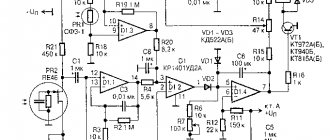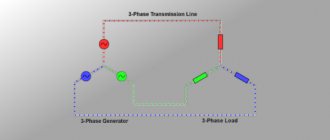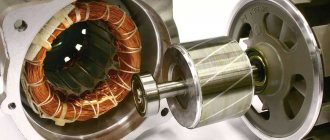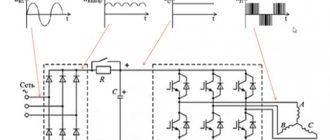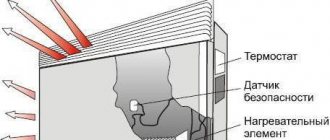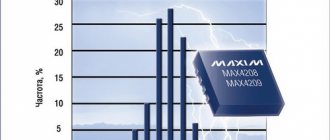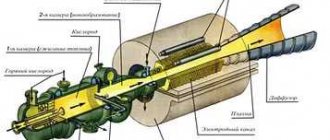According to current technical standards (PUE, in particular), during the operation of any electrical equipment, increased attention is paid to protecting working personnel and private consumers from electric shock. Research into this problem typically involves technical issues such as:
- what is called protective grounding in general?;
- the ability to connect to circuit elements and select the type of grounding device (GD);
- What is preferable: protective grounding or so-called “grounding”?
Another important point is the user’s desire to become familiar with how the operating parameters of the ground electrode can be calculated and how this design works. Each of these issues regarding protective grounding devices requires separate and careful consideration.
Classification of grounding systems (natural and artificial structures)
Both natural and artificial systems and devices are widely used as grounding devices with characteristics that meet the requirements of the PUE. Natural storage facilities are metal structures and pipelines already buried in the ground or parts thereof that are in direct contact with the ground.
Additional information: These also include unbroken cable sheaths, metal tongues and similar elements of grounded structures and communication systems.
Natural grounding conductors of buildings and structures
Since there are absolutely no special costs required for the arrangement of such earthing devices, they are recommended for use in the first place by current standards. And only if natural grounding structures cannot be found, it is necessary to arrange their artificial analogue. To find out what is the definition of artificial grounding, you will need to understand it in more detail.
Such a system is understood as a device manufactured specifically for the purpose of organizing local grounding at a transformer substation or on the consumer side. Driven vertical or laid horizontal steel blanks are traditionally used as structural elements. In the first case, steel rods with a diameter of at least 12 mm and a length of 3-5 meters are used, and in the second, angles with a standard size of 50x50x6 mm are used. For the same purpose, metal pipes with a diameter of at least 6 mm can be selected.
Installation of a ground electrode in the ground
Vertical electrodes (see photo on the left) are driven into the ground to a depth of 2.5 meters, for which a trench about 0.5-0.6 meters deep is first prepared in it. The head of the driven electrode should protrude above the ground surface of the dug trench to a height of about 0.1-0.2 meters. Vertical structural elements are connected to horizontal jumpers for welding.
Please note: The trench system with the electrode rods placed in them must be covered with previously selected soil, cleared of large stones and foreign debris.
The choice of parameters of electrode rods and the depth of their immersion depend on the nature of the soil in a given area and the characteristics of its climatic conditions.
According to GOST and the current provisions of the PUE, the resistance Rz of the ground loop during the period of operation should be:
- no more than 8 Ohms with a substation supply phase voltage of 220/127 Volts,
- about 4 Ohms with a linear supply voltage of 380 Volts;
- no more than 2 Ohms with a power supply of 660/380 Volts.
These parameters are valid for the case when chargers are used in networks with voltages up to 1000 Volts. If they are installed for existing electrical installations with operating voltages above 1000 Volts and with low ground fault currents, the resistance is calculated using special formulas (see PUE).
Grounding. What is it and how to make it (part 1)
My story will consist of three parts.
1 part. Grounding (general information, terms and definitions)
Part 2. Traditional methods of constructing grounding devices (description, calculation, installation)
Part 3. Modern methods of constructing grounding devices (description, calculation, installation)
In the first part (theory), I will describe the terminology, the main types of grounding (purpose) and the requirements for grounding. In the second part (practice) there will be a story about traditional solutions used in the construction of grounding devices, listing the advantages and disadvantages of these solutions. The third part (practice) will in a sense continue the second. It will contain a description of new technologies used in the construction of grounding devices. As in the second part, listing the advantages and disadvantages of these technologies.
If the reader has theoretical knowledge and is only interested in practical implementation, it is better for him to skip the first part and start reading from the second part.
If the reader has the necessary knowledge and wants to get acquainted only with new products, it is better to skip the first two parts and immediately move on to reading the third.
My view of the described methods and solutions is to some extent one-sided. I ask the reader to understand that I do not put forward my material as a comprehensive objective work and express my point of view and my experience in it.
Some part of the text is a compromise between accuracy and the desire to explain in “human language”, so simplifications are made that can “harm the ears” of a technically savvy reader.
1 part. Grounding
In this part I will talk about terminology, the main types of grounding and the quality characteristics of grounding devices.
A. Terms and definitions B. Purpose (types) of grounding
B1. Working (functional) grounding B2. Protective grounding
B2.1. Grounding as part of external lightning protection B2.2. Grounding as part of the surge protection system (SPD) B2.3. Grounding as part of the electrical network
B. Quality of grounding. Grounding resistance.
IN 1. Factors affecting the quality of grounding
B1.1. Contact area of the ground electrode with the ground B1.2. Electrical resistance of soil (specific)
AT 2. Existing standards for grounding resistance B3. Calculation of grounding resistance
A. Terms and definitions
And I will try to “translate” these definitions into “simple” language.
Soil is a medium that has the property of “absorbing” electric current. It is also a certain “common” point in the electrical circuit, relative to which the signal is perceived.
This is a device/circuit consisting of a grounding conductor and a grounding conductor connecting this grounding conductor to the grounded part of the network, electrical installation or equipment. Can be distributed, i.e. consist of several mutually distant grounding conductors.
In the figure it is shown with thick red lines:
Ground electrode
- a conductive part or a set of interconnected conductive parts that are in electrical contact with the ground (PUE 1.7.15).
The conductive part is a metal (current-conducting) element/electrode of any profile and design (pin, pipe, strip, plate, mesh, bucket

